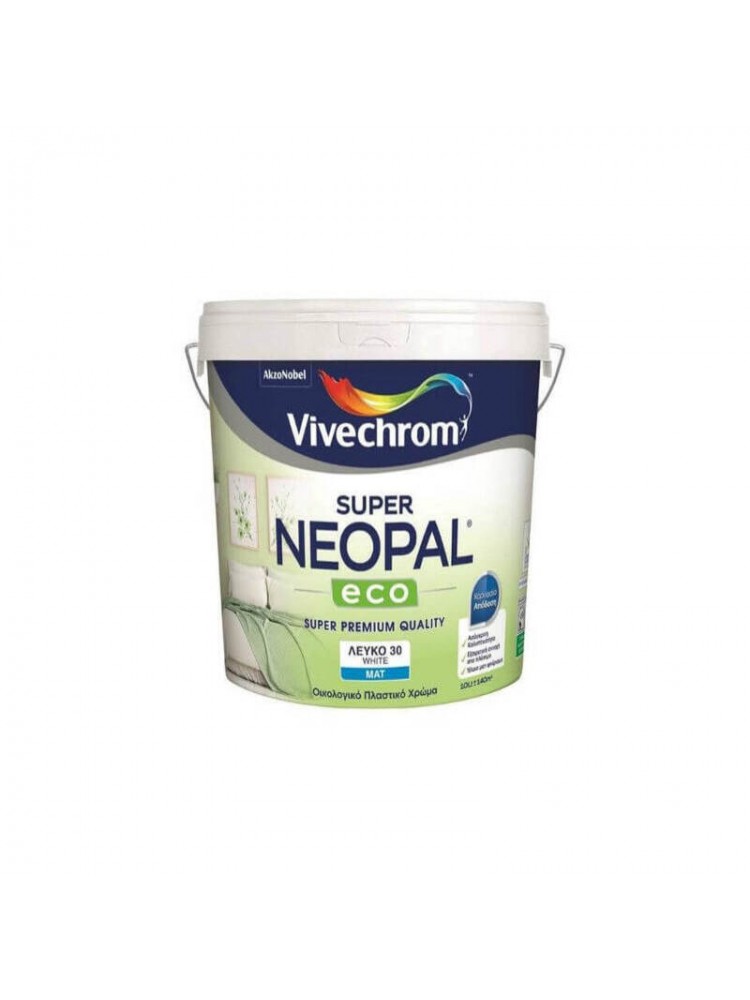
NEOPAL ECO is top quality ecological plastic paint.
NEOPAL ECO is top quality ecological plastic paint. It is certified by ASAOS and meets the criteria of the EU Ecolabel Awarding Organization. It does not contain ammonia and is ideal for all interior inhabited spaces. Thanks to its special composition, it protects the user and does not pollute the environment. It does not contain dangerous substances, such as heavy metals, free formaldehyde, aromatic hydrocarbons. It stands out for its great coverage and performance, its high whiteness and brightness, and its lively and unchanged shades. It is applied to plaster, concrete, bricks, wood. It is easy to work with, spreads wonderfully and has strong adhesion and quick drying. It creates a beautiful matte finish with excellent resistance to frequent washing and adverse weather conditions.
PRODUCT DETAILS
- Application method : Roller, brush or airless gun.
- Dilution: 5-10% pure water.
- Performance: Approximately 12m2 per liter on properly prepared surfaces.
- Drying : To the touch in 1 hour and repaintable after 3 hours. These times vary according to weather conditions (humidity, temperature).
- Shades : Available in white. In addition, it is colored through the VIVECHROME COLOR COMPOSITIONS system in an unlimited number of shades.
SURFACE PREPARATION
The surfaces must be clean, dry and free from defective or poorly cohesive materials, dust, oils and salts. Use VIVECHROME NEOPAL STUCCO putty for plastering and troweling the surfaces. For new surfaces or porous surfaces painted with lime, glue or poor quality paints, prime with the water primer, NEOPAL PRIMER by VIVECHROME diluted up to 50% with water, and then apply two coats of NEOPAL ECO. For trouble-free surface repainting, apply two coats of NEOPAL ECO directly.
APPLICATION
The paint is applied and allowed to dry at a temperature of 10o C to 35o C. Processing such as sanding, flame cleaning, etc. of painted surfaces may create hazardous dust and/or fumes. Ensure good ventilation during application and drying. You must use appropriate means of personal protection.
CLEANING TOOLS
Remove as much material as possible from tools before cleaning them. Clean tools immediately after use with water and detergent solution. Do not pour into drains or other water sources. Dispose of empty containers responsibly and in accordance with applicable legislation.



